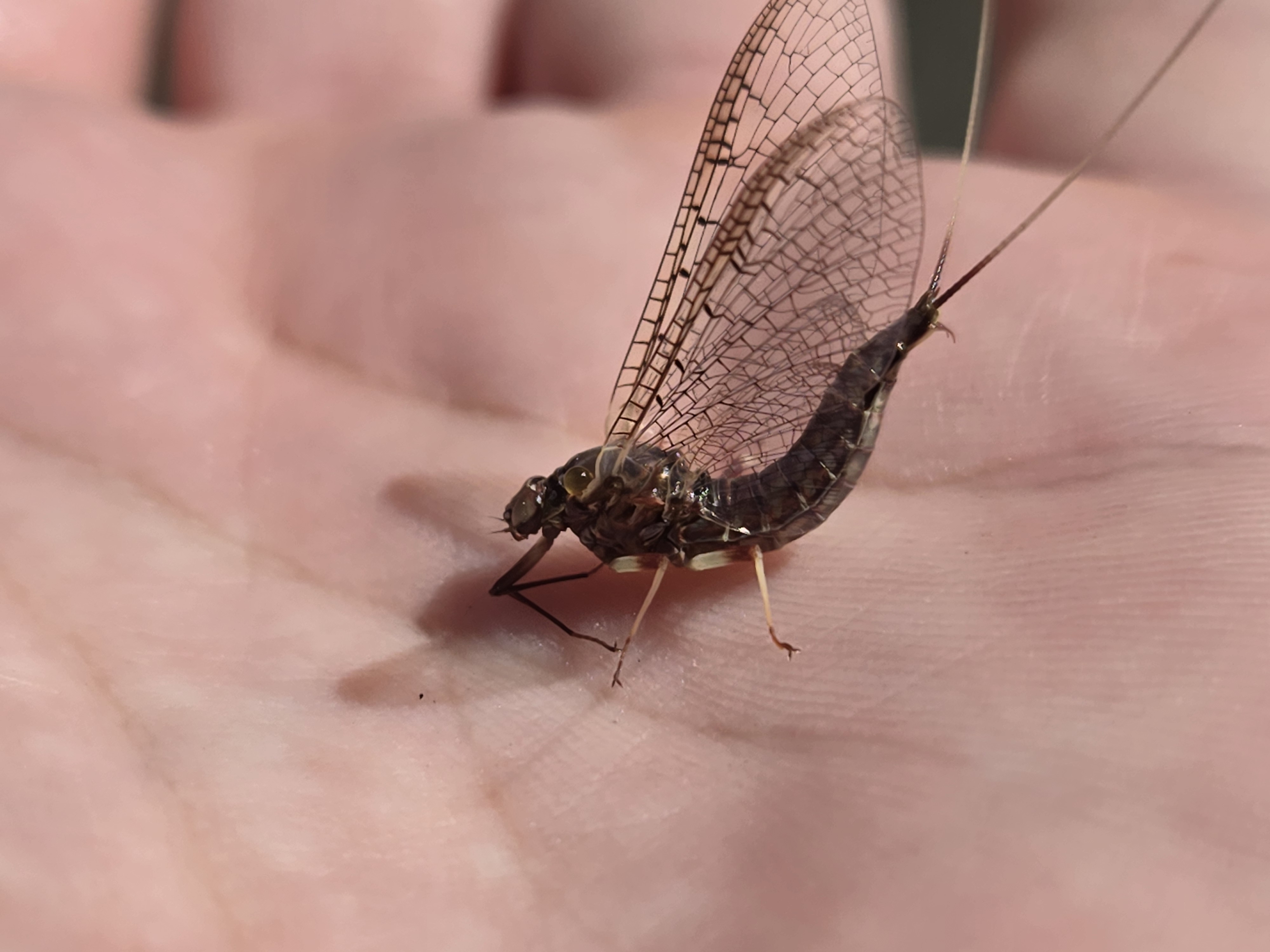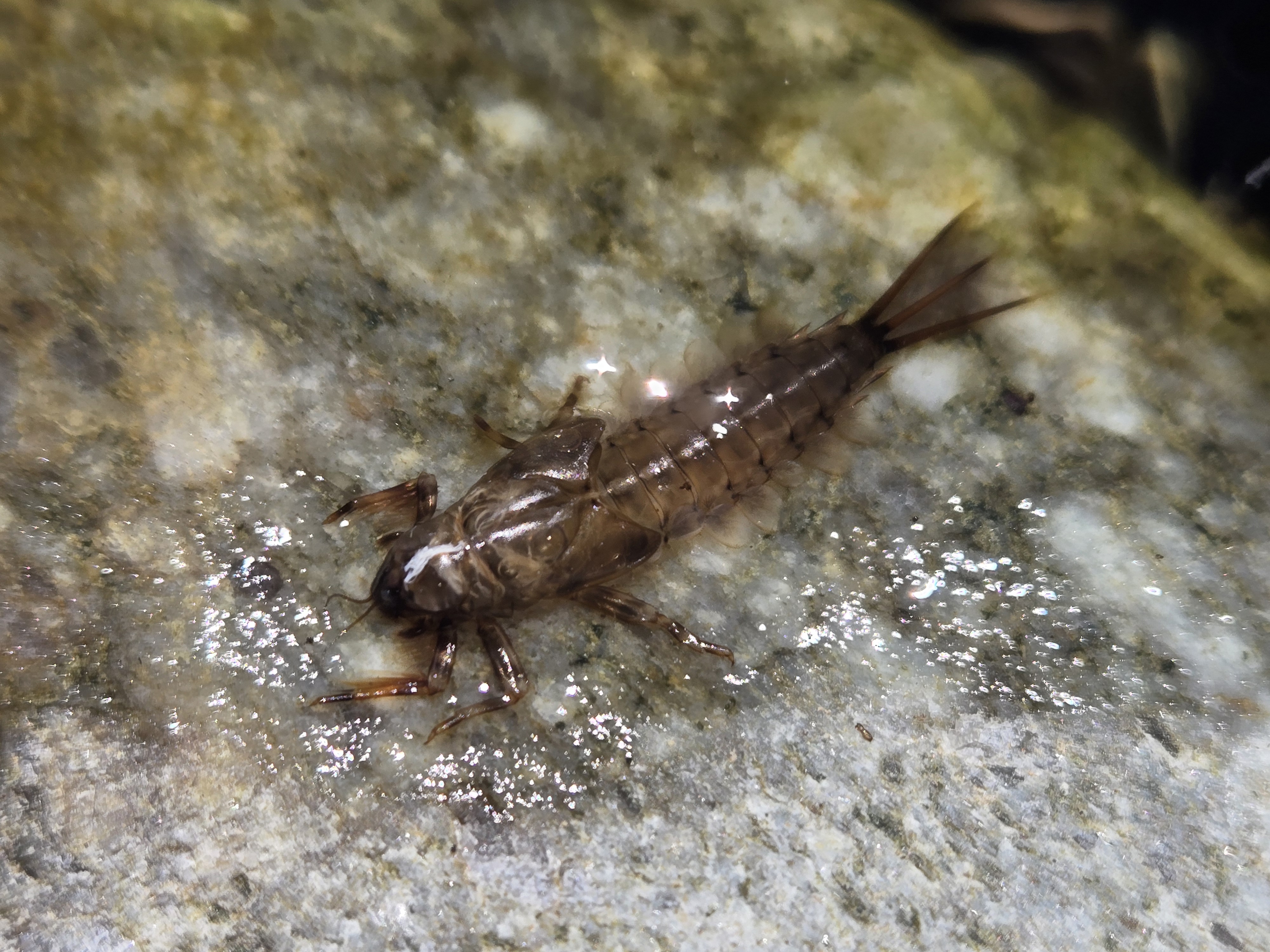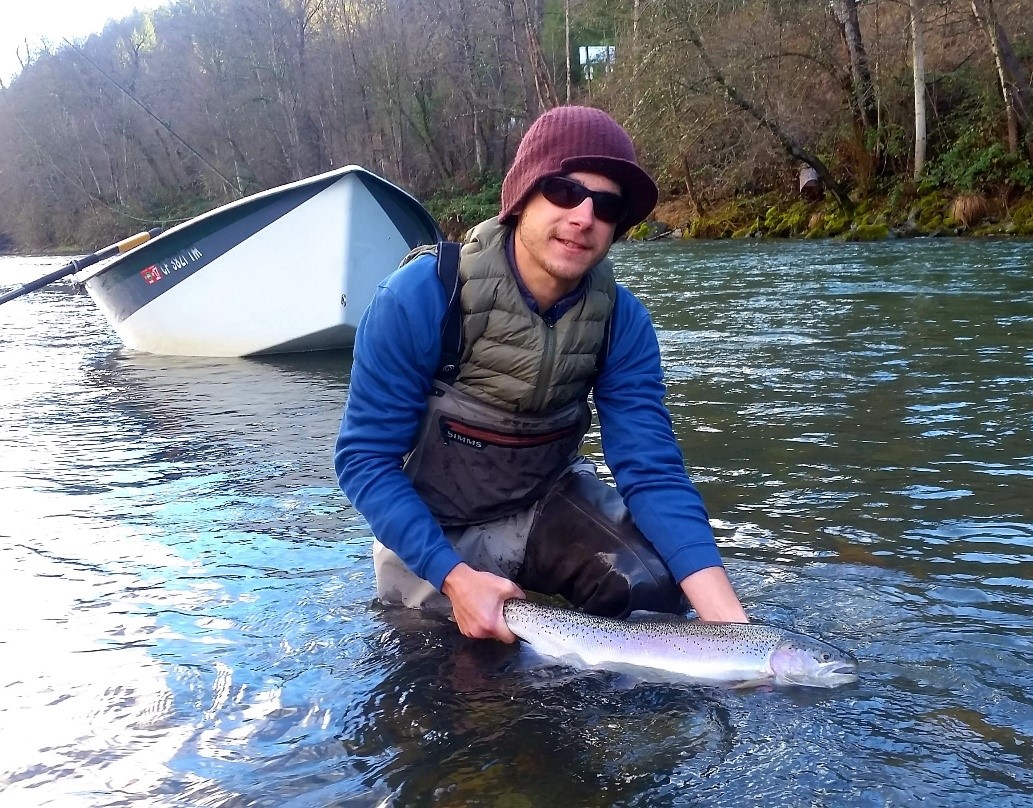
Isonychia mayflies
You may have noticed a rather large insect fluttering down the river during the months of September and October. These insects are mayflies from the family Isonychiidae (eye-son-nic-ee-uh-day) (known in the fly-fishing community as Mahogany Duns or Slate Drakes). Mayflies are unique in that they have two adult stages in their lifecycle while all other insects have one.
Isonychiidae mayflies usually live an entire year in the river as nymphs before swimming to the edges of the river, crawling out of the river on a rock, and emerging into their sub-adult stage. As adults, they typically only live for a day or two as their only job is to mate, lay eggs, and then die. Isonychiidae mayflies are noted for their large size compared to other mayflies and for their unique swimming ability. They are very adept swimmers and use their swimming prowess to capture their prey. They also have fine hairs on their forelegs which trap algae and other detritus which they then consume. The nymphs are a very strange looking (compared to other mayflies) and are readily identifiable by their elongated shape and ‘racing-stripe’ down their backs. Looking closely, the hairs on their forelegs become readily apparent and they are very easy to identify for any aquatic entomologist.

Isonychiidae mayflies are unique to the Trinity River with other populations scattered across northern California. The nearest population is found in the Pit River, but are rare there. The population in the Trinity River seems to be thriving and right now is the best time to see both the nymphs and adults. Look for the nymphs along the streambanks where they will look like small fish darting between the rocks. You will notice their shed exuviae (exoskeletons) attached to rocks. Adults can be found in the early afternoon fluttering in the air above the river. They seem to be more common in the area between Junction City and Cedar Flat.

Chris Laskodi, M.S., Fish Ecologist – Yurok Tribal Fisheries Department
Chris serves as the fish biologist/ecologist for the TRRP in the program’s Science branch. Chris has worked on the Trinity River since 2015, previously serving as a fish biologist for the Yurok Tribe and a fisheries technician for the US Fish & Wildlife Service. Chris holds a B.S. in Wildlife, Fish and Conservation Biology from the University of California, Davis and a M.S. in Aquaculture/Fisheries from the University of Arkansas at Pine Bluff. In his free time, Chris enjoys taking friends and family fishing on one of the many watercraft available to him.
